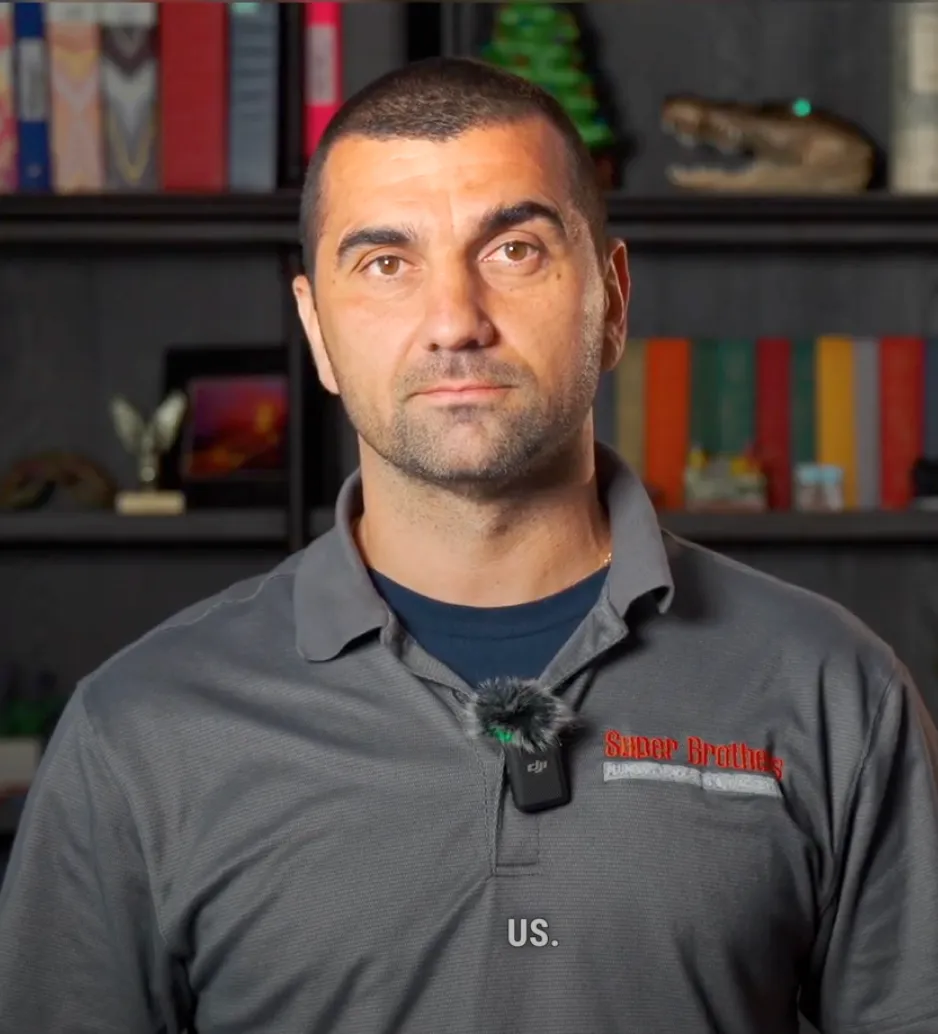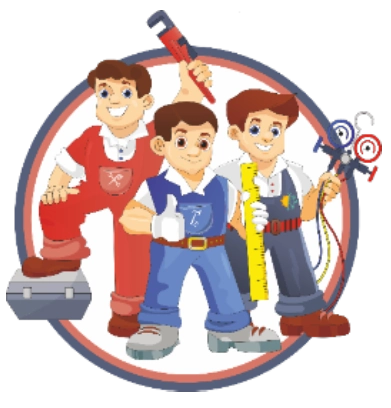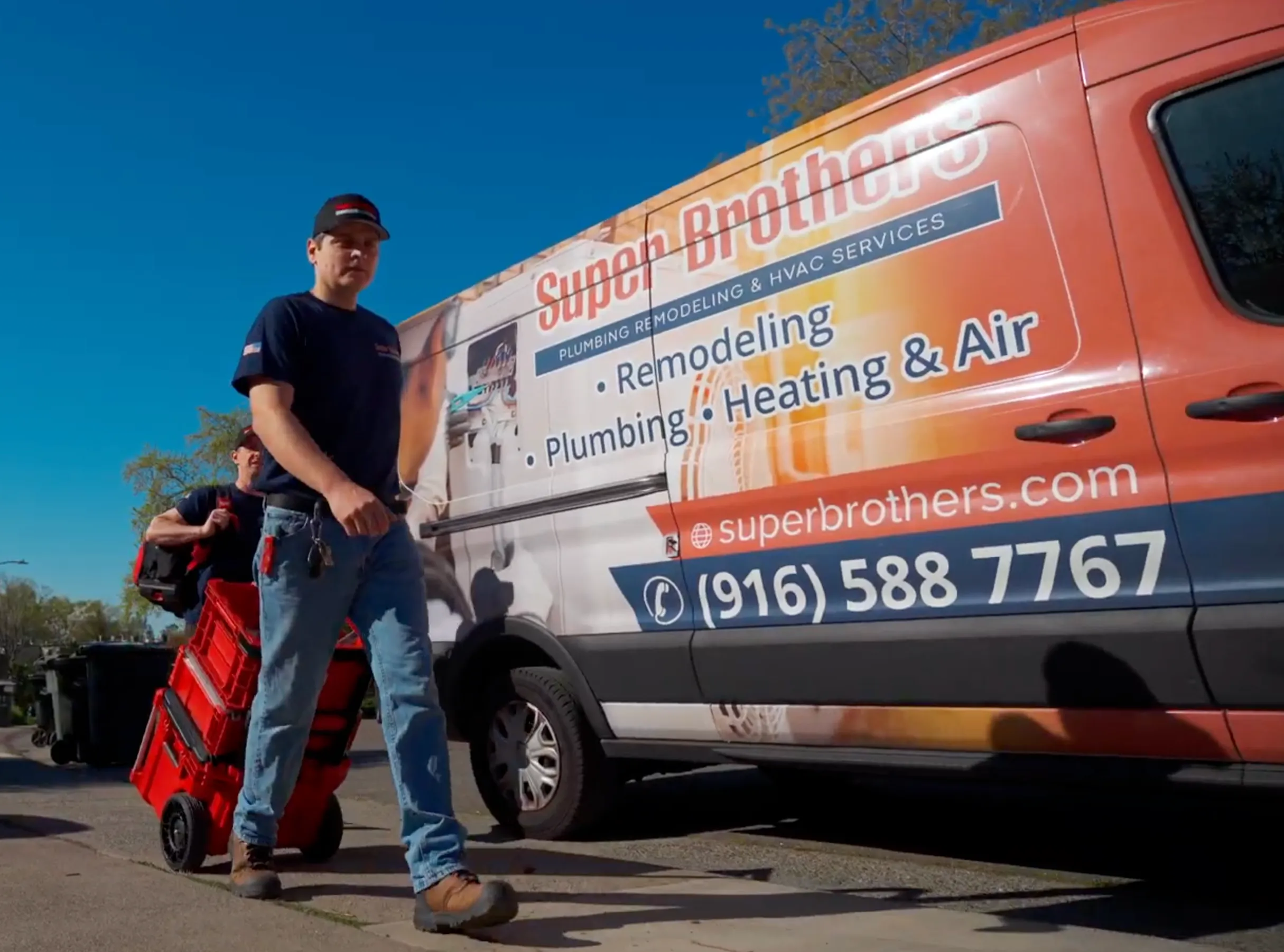Did you know that over 50% of sewer pipes in the US are over 50 years old? Aging sewer systems can lead to costly repairs and disruptions. That’s where sewer pipe lining comes in. By opting for sewer pipe relining or drain pipe lining, you can extend the life of your pipes without the need for extensive excavation. This innovative solution not only saves you money but also minimizes the environmental impact of traditional pipe replacement methods. Say goodbye to messy construction sites and hello to a quick, efficient way to rehabilitate your sewer system with pipe relining systems, a trenchless pipe lining process, and effective pipe repair solution. Discover how sewer pipe lining can transform your plumbing maintenance experience today.
Key Takeaways
- Regular Maintenance: Consider regular sewer pipe inspections to detect issues early on, preventing costly repairs.
- Explore Trenchless Options: Opt for trenchless sewer pipe lining methods to minimize disruption and save on restoration costs.
- Prioritize Longevity: Invest in durable materials for sewer pipe relining to ensure long-term efficiency and reliability.
- Proactive Approach: Address common concerns promptly to avoid potential sewer pipe lining complications in the future.
- Cost-Efficient Solutions: Compare the benefits of different sewer lining techniques, including pipe relining systems, to choose the most cost-effective option for your specific needs.
- Professional Consultation: Seek advice from experienced professionals to determine the most suitable sewer pipe lining solution for your property.
Understanding Sewer Pipe Lining
Definition and Purpose
Sewer pipe lining involves installing a new pipe liner within an existing damaged sewer pipe, creating a seamless, durable interior. This process effectively repairs damaged sewer lines without the need for extensive excavation.
Sewer pipe lining work begins by identifying the place where the sewer lining is needed. The sewer pipe lining process starts with cleaning the underground sewer pipe thoroughly to ensure a successful outcome. By utilizing this technique, it’s possible to repair damaged sewer lines with minimal disruption.
Benefits Over Traditional Methods
One significant advantage of sewer pipe lining is its efficiency compared to traditional sewer line repair methods. Unlike full sewer pipe replacement, which requires digging up the entire line, sewer pipe relining only needs access points at either end of the damaged section. This minimizes disruption to landscaping and reduces the overall cost of repairs.
- Less invasive: Sewer pipe relining avoids the need for extensive excavation, preserving landscapes and structures above ground.
- Time-saving: The process is quicker than traditional methods, allowing for rapid repairs and minimizing downtime.
- Cost-effective: With reduced labor and equipment requirements, sewer pipe lining offers a more economical solution for repairing damaged sewer lines.
Environmental Advantages
In addition to its practical benefits, sewer pipe lining also offers significant environmental advantages. By eliminating the need for full sewer pipe replacement, this method reduces the amount of waste generated during repairs. Traditional excavation methods often result in large amounts of soil and debris being displaced, contributing to environmental pollution.
- Reduced carbon footprint: Sewer pipe relining requires fewer resources and materials, resulting in lower carbon emissions.
- Preservation of green spaces: By avoiding extensive digging, sewer pipe lining helps protect trees, plants, and other vegetation.
- Sustainable solution: The longevity of epoxy pipe lining ensures that repairs last for years, reducing the frequency of maintenance and further environmental impact.
Step By Step Lining Process
Inspection
During the sewer pipe lining process, the initial step involves a thorough inspection of the existing pipeline. This inspection is crucial to identify any damages, blockages, or deterioration that may impact the lining process. Advanced technology such as CCTV cameras is often used for accurate assessment.
Cleaning and Preparation
After inspection, the next step is cleaning and preparing the pipe for lining. High-pressure water jets or mechanical tools are utilized to remove debris, scale, and roots from the pipe walls. This ensures a smooth surface for the epoxy resin to adhere to during the lining process.
Liner Installation
Once the pipe is clean, the liner installation begins. A flexible epoxy resin-saturated liner is inserted into the existing pipe through an access point. The liner is then inflated, pressing against the pipe walls. This creates a new seamless inner layer within the old pipe, effectively sealing off cracks and leaks.
Curing Process
After the liner is in place, the curing process starts. Heat or UV light is used to harden the epoxy resin, transforming it into a durable and long-lasting material. This step is vital as it ensures the structural integrity of the new pipe lining, making it resistant to corrosion and root intrusion.
Final Inspection
The last step involves a final inspection to confirm the quality and effectiveness of the newly installed pipe lining. Another CCTV inspection may be conducted to verify that there are no defects or imperfections in the lining. This thorough evaluation guarantees that the lining process was successful and that the pipeline is now fully restored.
Benefits of Trenchless Pipe Lining:
- Minimizes disruption to property and landscape
- Reduces costs associated with traditional excavation methods
Trenchless Lining Origins
Evolution
Trenchless pipe lining, also known as sewer pipe lining or drain pipe lining, has significantly evolved over the years. The concept of trenchless sewer repair dates back to the 1970s when the trenchless pipe lining process was first introduced as a solution to traditional excavation methods.
The trenchless pipe repair method initially involved creating a new pipe within the existing damaged one using epoxy resins or similar materials. This innovative approach eliminated the need for extensive digging and disruption to the surrounding environment, marking a significant shift in sewer repair techniques.
Advantages Over Traditional Methods
Compared to traditional pipe replacement techniques that required extensive excavation and disruption, trenchless sewer repair offered a more efficient and cost-effective solution. By utilizing advanced technologies and materials, trenchless lining not only minimized environmental impact but also reduced the overall repair time significantly.
The trenchless pipe lining repairs process involves inserting a liner coated with resin into the damaged pipe, which is then inflated and cured in place. This seamless liner effectively seals any cracks or leaks, restoring the structural integrity of the sewer line without the need for costly and time-consuming excavation.
Revolutionizing Sewer Repair Industry
The introduction of trenchless sewer pipe lining has revolutionized the sewer repair industry by providing a faster, more durable, and less invasive solution to common sewer line issues. This innovative method has become increasingly popular among homeowners and municipalities alike due to its numerous benefits.
One key advantage of trenchless pipe replacement is its ability to extend the lifespan of existing sewer lines without the need for complete replacement. By repairing damaged pipes from within, trenchless lining offers a long-term solution that minimizes future maintenance and repair costs.
Exploring Sliplining
Cost-Effective
Sliplining involves inserting a smaller pipe into the existing damaged pipe, creating a new structural liner. This method is cost-effective compared to traditional digging.
Sliplining reduces the need for extensive excavation, leading to significant cost savings. It eliminates the expenses associated with digging up entire sections of pipelines, making it an attractive option for rehabilitating sewer systems.
Minimal Disruption
One of the key advantages of sliplining is its ability to minimize disruption to the surrounding environment. By utilizing existing access points such as manholes, the process can be completed with minimal disturbance.
Sliplining is ideal for urban areas or locations with limited space where traditional methods like digging would cause substantial disruptions. The reduced need for excavation ensures that daily activities can continue without major interruptions.
Real-Life Applications
In real-life scenarios, sliplining has been successfully used in various sewer line rehabilitation projects. For instance, in a project involving a historic district with mature trees, sliplining was chosen over traditional methods to prevent damaging the tree roots.
Another example is the rehabilitation of aging cast-iron sewer lines using sliplining technology. By inserting a new liner into the existing pipe, municipalities can extend the life of their infrastructure without the need to replace the entire system.
Insight into Pipe Bursting
Process Overview
Pipe bursting is a trenchless method used for replacing buried pipelines without the need for extensive excavation. This process involves breaking the existing pipe while simultaneously pulling through a new seamless pipe. The method is efficient and minimizes disruption to the surrounding area.
Pipe bursting begins with the insertion of a cone-shaped bursting head into the old pipe. The bursting head fractures the old pipe as it moves through, displacing the fragments into the surrounding soil. Simultaneously, a new carrier pipe, typically made of high-density polyethylene (HDPE) or PVC, is pulled through the space created by the bursting head.
Benefits of Pipe Bursting
- Efficiency: Pipe bursting is faster than traditional methods, reducing project timelines significantly.
- Durability: The seamless nature of the new pipe reduces the chances of future leaks and blockages.
- Less Disruption: Minimal excavation means less disturbance to landscaping and infrastructure.
Pipe bursting offers a cost-effective solution for pipeline replacement, especially in urban areas where traditional methods would be disruptive and costly. It provides a long-term fix that enhances the overall functionality of the sewer system.
Common Misconceptions
- Impact on Infrastructure: Contrary to popular belief, pipe bursting does not damage existing infrastructure. The process is designed to create minimal disturbance to the surroundings.
- Effectiveness: Some may doubt the effectiveness of pipe bursting compared to traditional methods. However, advancements in technology have made this method a reliable and efficient choice for pipeline replacement projects.
Benefits of Sewer Lining
Longevity Boost
Sewer lining offers a significant advantage by enhancing the longevity of existing sewer systems. By reinforcing the interior of pipes with durable materials, such as epoxy resin, homeowners and municipalities can effectively extend the lifespan of their sewer infrastructure. This preventive measure helps in averting frequent repairs and replacements, ensuring a more sustainable and long-lasting solution for managing sewage systems.
Cost-Efficiency
One key benefit of sewer pipe lining is the substantial cost savings it brings to both homeowners and municipalities. Unlike traditional methods that involve extensive excavation and replacement of damaged pipes, trenchless sewer repair techniques significantly reduce labor costs and equipment expenses. This cost-effective approach not only minimizes the overall project expenditure but also reduces disruption to daily activities for residents and businesses.
Environmental Impact
Implementing sewer lining as a sewer line repair option presents an environmentally friendly solution for addressing sewer system issues. By avoiding the need for disruptive digging and excavation, trenchless sewer repair methods help in preserving landscapes and minimizing disturbances to surrounding ecosystems. This eco-conscious approach aligns with sustainability goals while ensuring efficient and effective maintenance of sewer networks.
Improved Functionality
Drain pipe lining enhances the functionality of sewer systems by eliminating common issues like leaks, cracks, and root intrusions. The seamless lining created within the pipes through innovative technologies ensures smooth wastewater flow and prevents clogs or blockages. This improved functionality not only enhances the overall performance of the sewer system but also reduces the risk of backups and overflows, promoting a healthier and more hygienic environment.
Minimal Disruption
When opting for sewer pipe relining, homeowners and municipalities benefit from minimal disruption to their properties and communities. The trenchless nature of this repair method eliminates the need for extensive excavation, reducing noise levels, dust, and inconvenience caused by traditional sewer repair processes. Residents can continue their daily routines without major disturbances, making sewer lining a convenient and practical choice for maintaining sewer infrastructure.
Addressing Common Concerns
Repair Solutions
Sewer pipe lining is often misunderstood as a temporary fix, but in reality, it offers long-term repair solutions. Unlike traditional methods that require extensive digging, trenchless repair techniques provide durable fixes.
Cost Considerations
One common concern is the cost of sewer pipe lining. While upfront costs may seem higher, the long-term savings from reduced maintenance and repair expenses make it a cost-effective choice.
Environmental Impact
Another misconception is the environmental impact of sewer pipe lining. Trenchless repair methods are eco-friendly as they minimize disruption to landscapes and reduce the need for heavy machinery.
Lifespan Expectations
e homeowners worry about the lifespan of lined pipes. Modern materials used in sewer lining can last up to 50 years or more, providing durable and reliable performance over time.
Source Reliability
Concerns about the reliability of information sources can also arise. It’s crucial to consult reputable sources and licensed professionals for accurate guidance on sewer pipe lining.
Damage Prevention
One myth surrounding sewer pipe lining is that it can cause damage to existing pipes. However, trenchless repair methods involve inserting a new liner inside the old pipe, which actually reinforces and enhances its structural integrity.
Expert Consultation
To address skepticism, seeking expert consultation is essential. Professionals can assess your specific situation, provide detailed explanations, and offer customized solutions tailored to your needs.
FAQs on Sewer Lining
Benefits
- Cost-effective: Sewer lining can be more affordable than traditional excavation methods.
- Minimally invasive: The process is less disruptive to your property and landscaping.
Sewer lining involves installing a new liner inside an existing damaged pipe, creating a seamless, durable, and long-lasting solution. Common questions about sewer lining include:
How Does Sewer Lining Work?
Sewer lining utilizes a flexible tube coated with resin that is inserted into the damaged pipe. The resin hardens, forming a new pipe within the old one.
What Are the Advantages of Sewer Liners?
- Prevents root intrusion
- Improves flow capacity
- Resistant to corrosion
Is Sewer Lining Suitable for All Types of Pipes?
Sewer lining is compatible with various pipe materials such as clay, cast iron, PVC, and Orangeburg pipes.
How Long Do Sewer Repair Liners Last?
On average, sewer repair liners have a lifespan of 50+ years, providing long-term durability and reliability.
Can I Trust Any Sewer Line Experts for Sewer Lining?
It’s crucial to hire a reputable sewer liner repair company with experience in sewer lining installations to ensure quality workmanship.
What Are Signs That Indicate I Need Sewer Lining?
- Frequent clogs
- Sewage odors
- Slow drainage
Are There Different Methods of Sewer Lining?
Two common methods are trenchless sewer lining and cured-in-place pipe (CIPP) lining, both offering efficient and effective solutions.
Will Sewer Lining Disrupt My Daily Routine?
No, sewer lining is a quick process that minimizes disruptions, allowing you to resume your daily activities promptly.
How Soon Can I Use My Sewer System After Lining Installation?
In most cases, you can use your sewer system immediately after the installation of the sewer lining.
Should I Consider Sewer Lining for My Property?
If you are experiencing sewer issues such as leaks or blockages, considering sewer lining can be a cost-effective and efficient solution.
Closing Thoughts
In wrapping up, you’ve delved into the world of sewer pipe lining. You’ve learned about the process, benefits, and common concerns surrounding this innovative solution. Now equipped with this knowledge, you’re better prepared to make informed decisions regarding your sewer system maintenance.
To ensure your sewer pipes stay in top shape, consider reaching out to professionals for an assessment. Regular maintenance can prevent costly repairs down the line. Stay proactive in caring for your sewer system to avoid unexpected issues and enjoy a smoothly running plumbing system for years to come.


